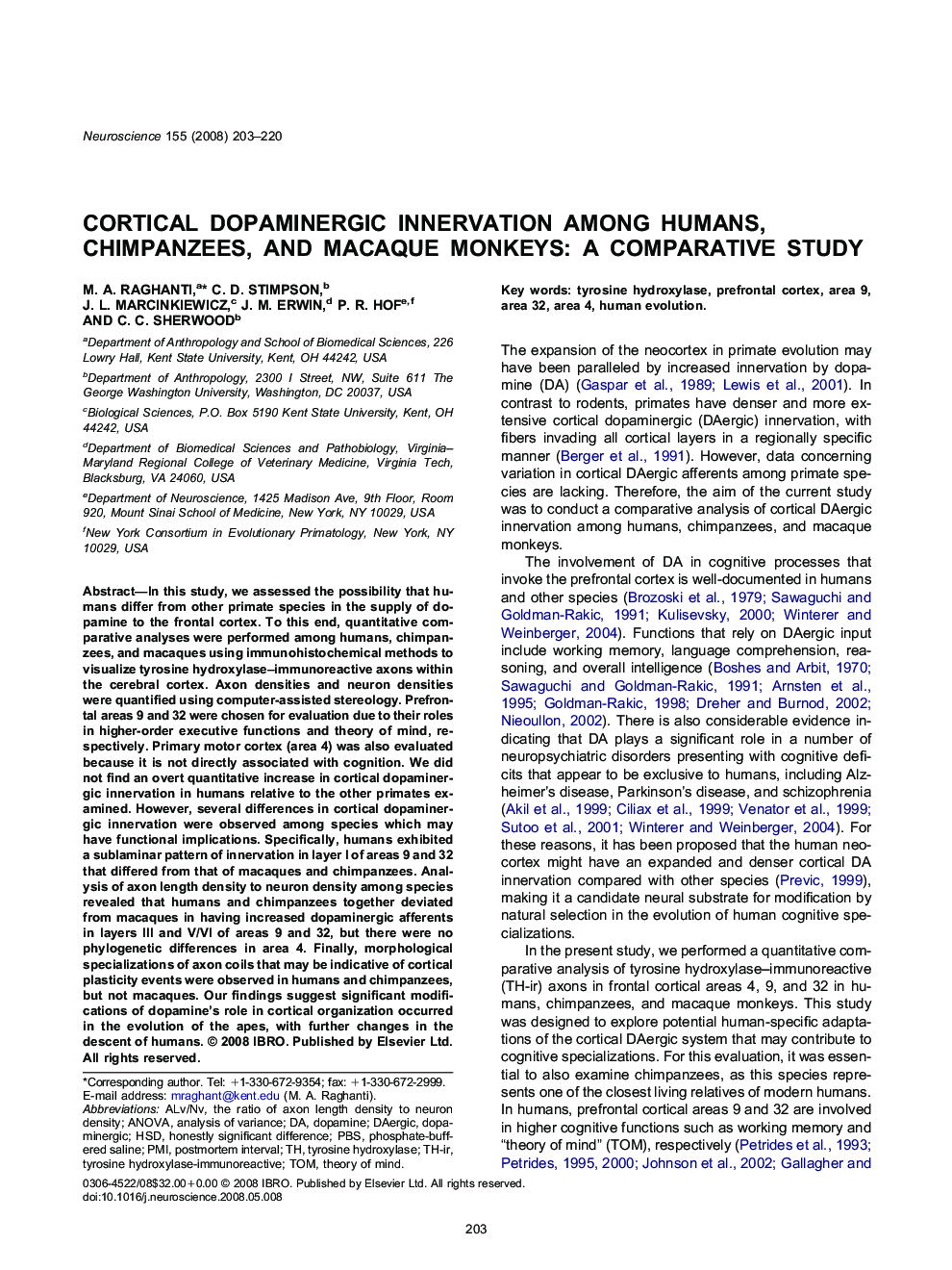| Article ID | Journal | Published Year | Pages | File Type |
|---|---|---|---|---|
| 4340492 | Neuroscience | 2008 | 18 Pages |
In this study, we assessed the possibility that humans differ from other primate species in the supply of dopamine to the frontal cortex. To this end, quantitative comparative analyses were performed among humans, chimpanzees, and macaques using immunohistochemical methods to visualize tyrosine hydroxylase–immunoreactive axons within the cerebral cortex. Axon densities and neuron densities were quantified using computer-assisted stereology. Prefrontal areas 9 and 32 were chosen for evaluation due to their roles in higher-order executive functions and theory of mind, respectively. Primary motor cortex (area 4) was also evaluated because it is not directly associated with cognition. We did not find an overt quantitative increase in cortical dopaminergic innervation in humans relative to the other primates examined. However, several differences in cortical dopaminergic innervation were observed among species which may have functional implications. Specifically, humans exhibited a sublaminar pattern of innervation in layer I of areas 9 and 32 that differed from that of macaques and chimpanzees. Analysis of axon length density to neuron density among species revealed that humans and chimpanzees together deviated from macaques in having increased dopaminergic afferents in layers III and V/VI of areas 9 and 32, but there were no phylogenetic differences in area 4. Finally, morphological specializations of axon coils that may be indicative of cortical plasticity events were observed in humans and chimpanzees, but not macaques. Our findings suggest significant modifications of dopamine's role in cortical organization occurred in the evolution of the apes, with further changes in the descent of humans.
